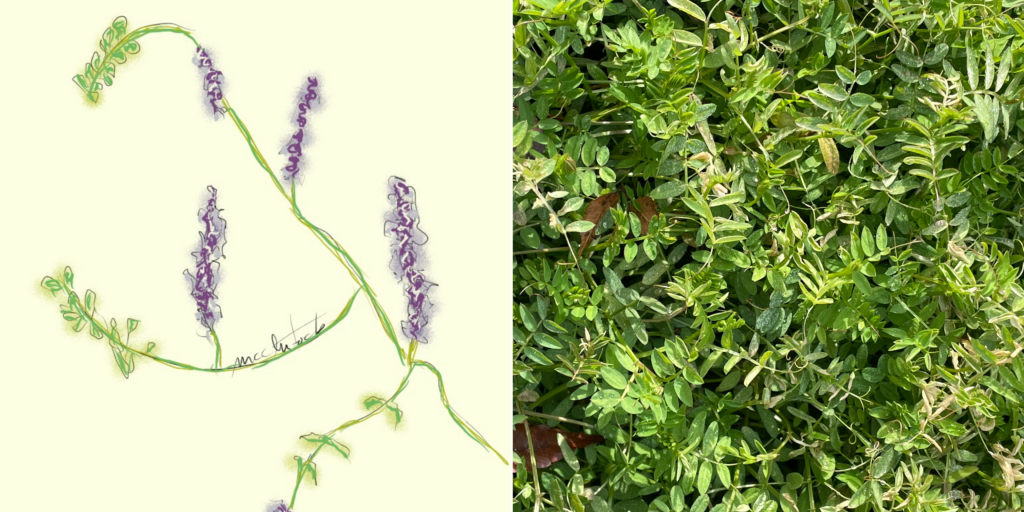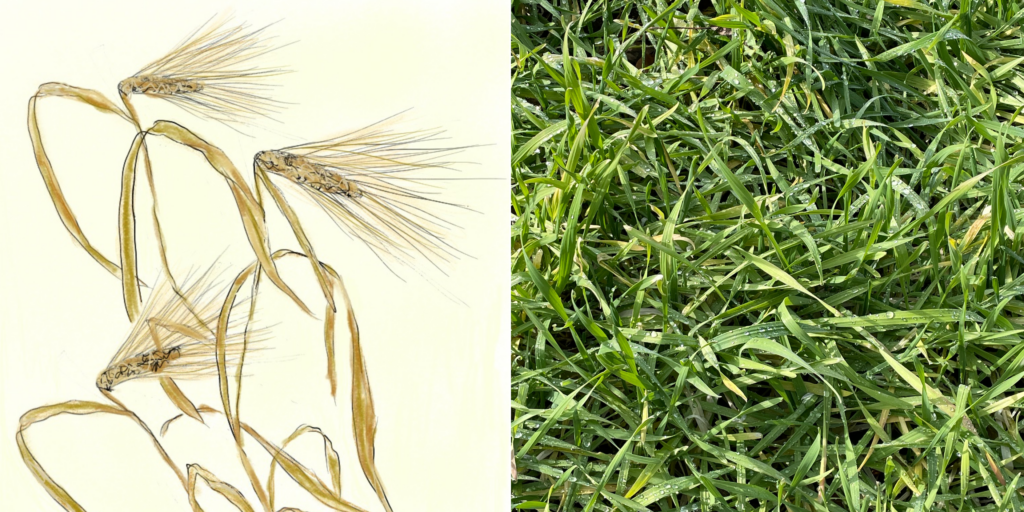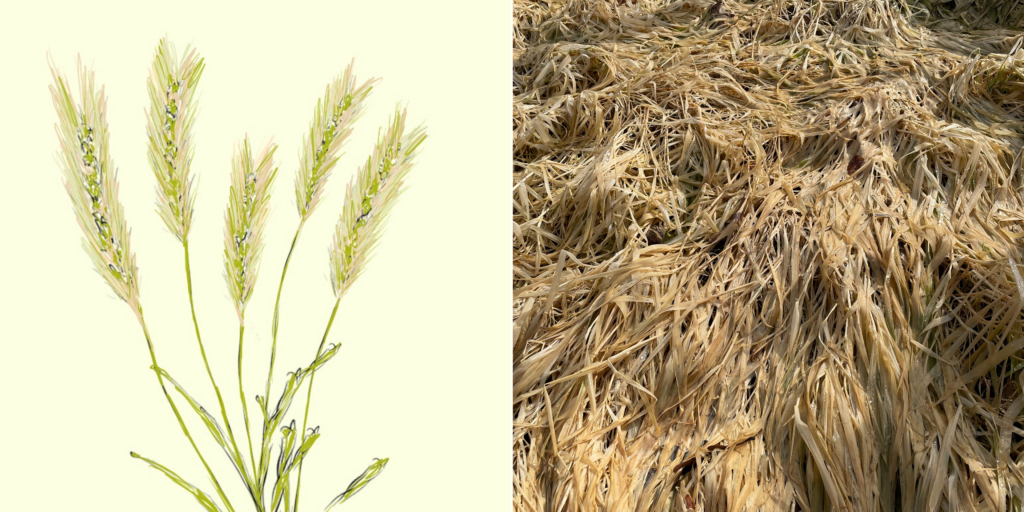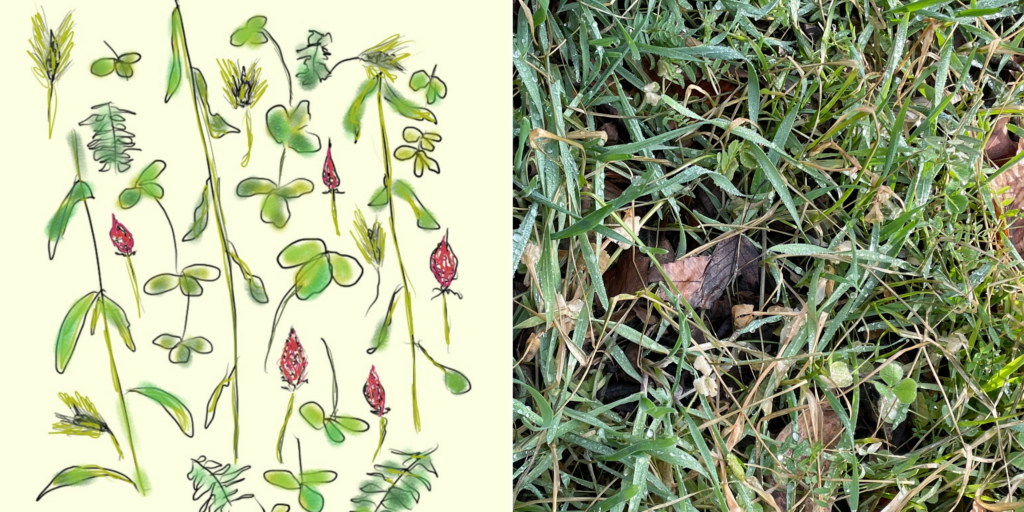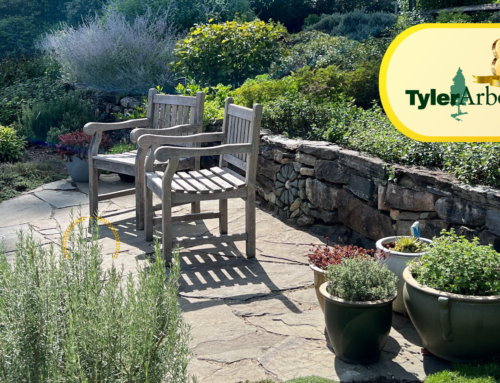Visitors to Lucille’s Garden will find a quiet space these days. After the hustle and bustle of a busy growing season it’s important to let the soil rest through the winter months. Still, it’s never too early to plan for next year! This winter we’re growing the following cover crops to prevent erosion and begin the process of replenishing the soil for the next season:
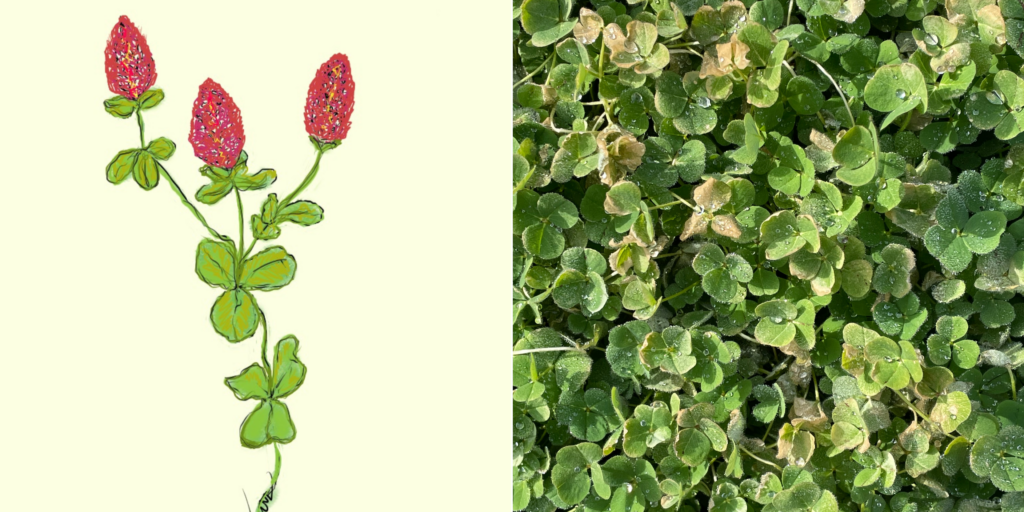
Trifolium incarnatum, crimson clover
Crimson Clover (Trifolium incarnatum)
This cover crop sports beautiful carmine plumes. This legume holds more than mere beauty, as it also adds nitrogen into the soil, while suppressing weeds and preventing erosion to boot.
Hairy Vetch (Vicia villosa)
The delicate, fern-like leaves and rambling tendencies are enough to grow vetch purely ornamentally. In this instance, however, we are growing hairy vetch to boost nitrogen in the soil. Come spring, we will incorporate it back into the soil as organic matter to feed the crops that follow.
Winter Rye (Secale cereale)
This fast-growing, dense cover holds the soil in place and withstands the strong winter winds. Dually beneficial, rye’s diving roots drill their way into the soil and help prevent compaction.
Barley (Hordem vulgare)
Barley is a hearty dietary staple across cultures. Its verdant stems provide a dense blanket for the soil. With its deep, fibrous roots, barley is able to take up and store nitrogen. Used as a green manure and turned into the soil, it helps to improve soil structure.
Green Manure Mix (Field peas, ryegrass, winter rye, hairy vetch, crimson clover)
This blend of legumes and grasses mitigates soil erosion by providing organic matter and groundcover. Spring plantings will benefit from the combined nutrients for an added boost for healthy harvesting.
The plants we chose as cover crops will all lend beauty to the winter landscape, help replenish nutrients in the soil, and protect the ground from winter weather. Stop by the garden this winter to see these crops in action!
Special thanks to Joan McClintock for the botanical illustrations.


